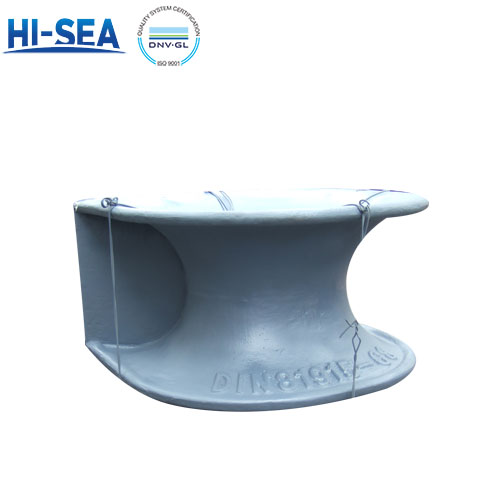
What are Chocks on Ships ?
Chocks serve as essential intermediate mooring units, guiding and supporting ropes from their origin points such as bollards, fairleads, bitts, or winches to their fixity points like tugs, jetties, or piers. They not only facilitate the passage of ropes but also absorb loads during mooring or towing, ensuring the vessel's secure fastening to its destination, whether it be a pier(for mooring), or another vessel(for towing). Mooring and towing operations are vital for every vessel, and various mooring apparatus, including chocks, are employed to ensure their safety and efficiency.
Overview
Design :
Determine Requirements: Understand the specifications of the vessel and the mooring system. This includes the vessel's size, weight, and the forces it will experience while moored.
Material Selection: Choose appropriate materials based on factors like strength, corrosion resistance, and cost.
Quality Control: Implement quality control measures throughout the manufacturing process to ensure that the finished product meets specifications and standards.
Installation: Proper installation of the mooring chock is crucial for its effectiveness and longevity. Follow manufacturer guidelines and ensure that it is securely attached to the vessel's structure.
Testing: Conduct testing to verify the performance of the mooring chock under simulated conditions. This may include load testing and inspection for any signs of deformation or failure.
Maintenance: Develop a maintenance plan to regularly inspect and maintain the mooring chock to prevent corrosion and ensure continued reliability.
Functions:
Securing Lines: Mooring chocks provide a stable and reliable point of attachment for mooring lines. These lines are essential for keeping the vessel in place, especially during adverse weather conditions or strong currents.
Distribution of Loads: Mooring chocks help distribute the loads from the mooring lines to the hull or deck of the vessel. This helps prevent localized stress points and ensures that the vessel remains secure without causing damage to its structure.
Reducing Wear and Tear: By providing smooth surfaces and appropriate angles for the mooring lines to pass through, chocks help minimize friction and abrasion. This reduces wear and tear on both the mooring lines and the vessel's structure.
Advantage
Flexibility: Mooring chocks come in various sizes and designs to accommodate different types and sizes of vessels, offering flexibility in mooring arrangements.
Ease of Use: They are typically designed for easy and quick attachment of mooring lines, simplifying the docking process for vessel operators.
Durability: Constructed from robust materials such as stainless steel or high-grade aluminum, marine mooring chocks are built to withstand the harsh marine environment and heavy loads, ensuring long-term reliability.
Cost-Effectiveness: Investing in high-quality mooring chocks can lead to long-term cost savings by reducing the need for frequent repairs or replacements and preventing potential damage to the vessel.





